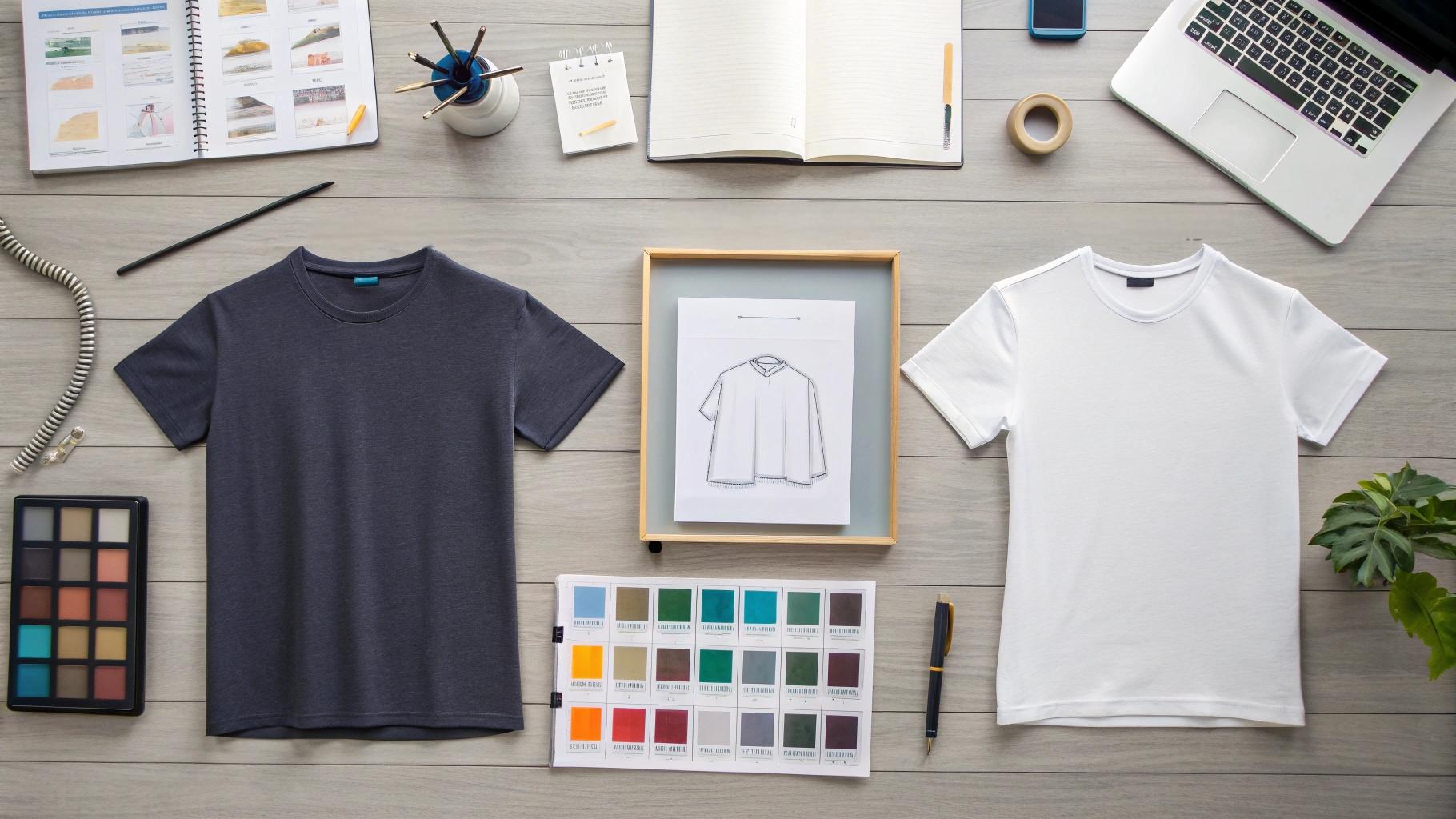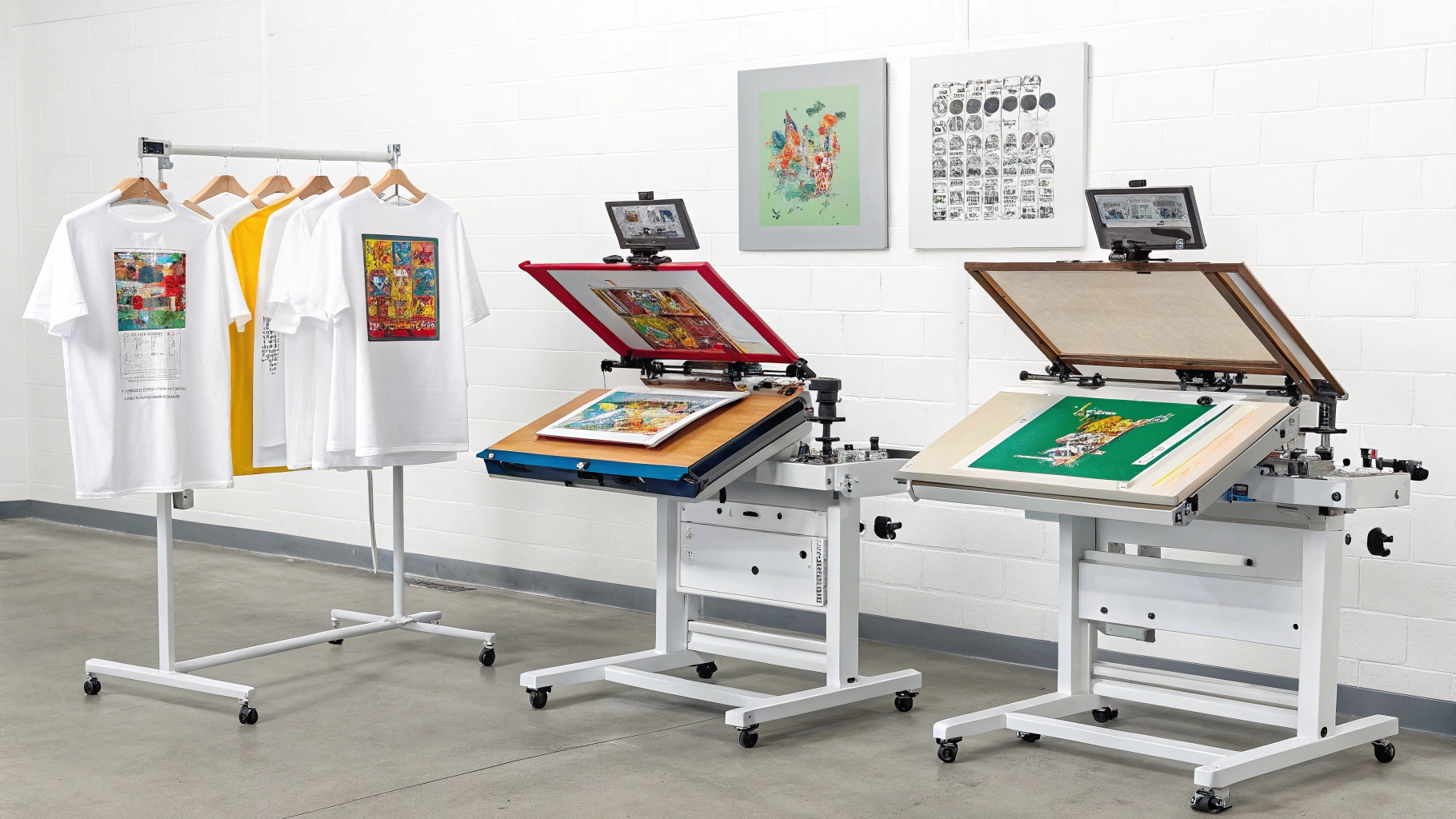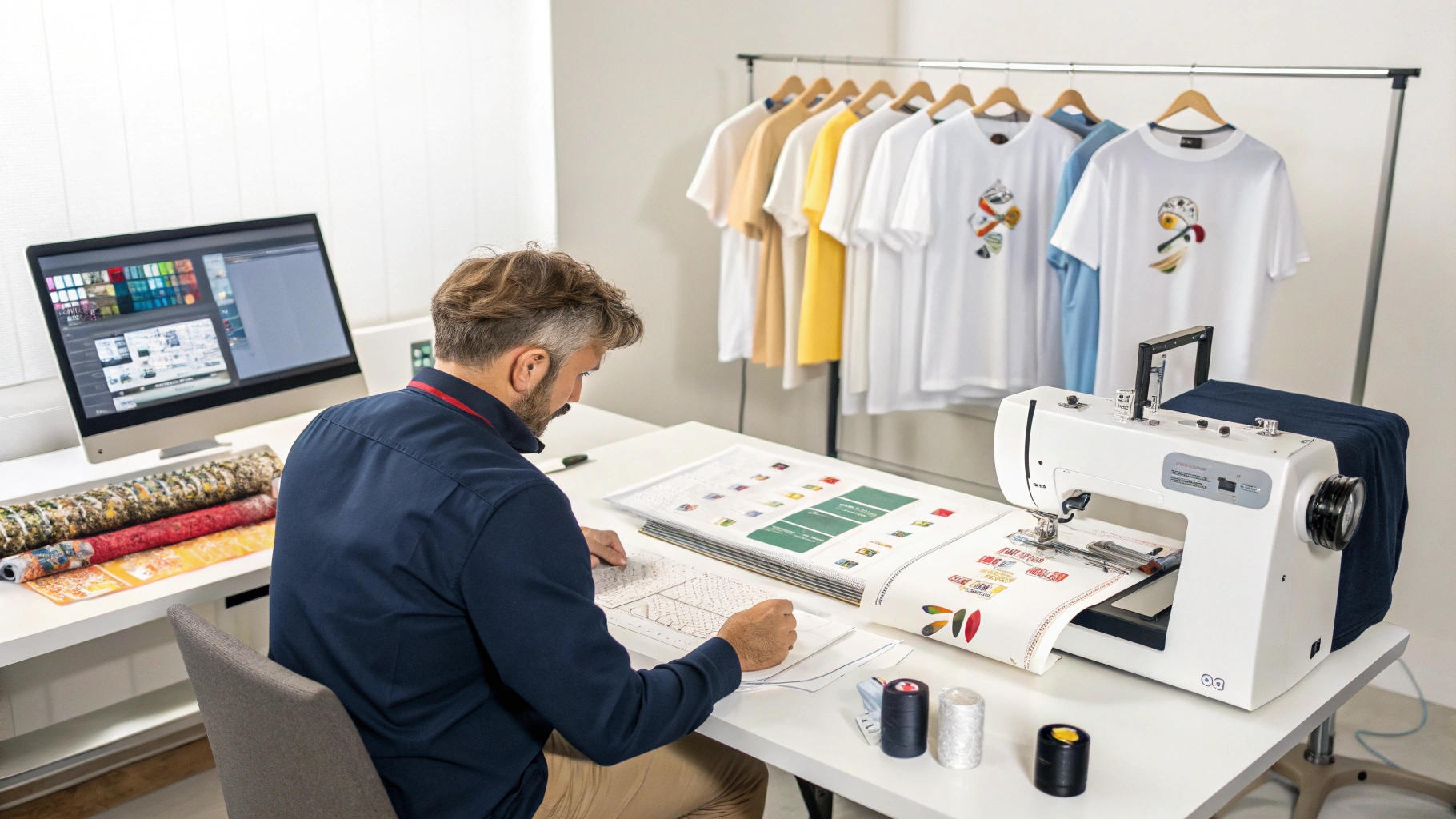Table of Contents
- What Should I Consider Before Designing a T-Shirt?
- What Are the Common Printing Methods for Custom T-Shirts?
- How Is a Custom T-Shirt Produced from Start to Finish?
- Where Can I Order Custom T-Shirts with Flexibility?
---
What Should I Consider Before Designing a T-Shirt?
Define Your Purpose
Begin by determining if your shirt is intended for personal expression, team branding, business promotion, or merchandise. Ensure your design direction aligns with your ultimate objective.
Pick the Right Fit and Fabric
Common choices include regular, slim, and oversized fits, while cotton, cotton-poly, and tri-blends offer different comfort levels.
Color and Style Planning
Consider how your design will look on various base colors. Light shirts pair well with bold graphics, while dark shirts might need white backgrounds for printing[1].
| Aspect | Options | Recommended For |
|---|---|---|
| Fit | Regular, Slim, Oversized | Different body types or streetwear brands |
| Fabric | 100% Cotton, Cotton/Poly, Tri-Blend | Comfort, breathability, stretch |
| Base Color | White, Black, Gray, Custom | Logo contrast and readability |
[1] Dark-colored tees often require a base layer of white ink when screen printing, increasing cost and time.

---
What Are the Common Printing Methods for Custom T-Shirts?
Screen Printing
The most common method. Great for bulk orders, durable, and color-rich. Setup costs apply for each new design.
DTG (Direct-to-Garment)
Ideal for short runs or detailed images. Works best on 100% cotton garments.
Heat Transfer & DTF
Suitable for photo-realistic prints or personalized names/numbers. Might feel less breathable compared to ink-based methods.
| Method | Best For | Pros | Cons |
|---|---|---|---|
| Screen Printing | Large runs, bold graphics | Vibrant, long-lasting | Setup cost, not ideal for photo prints |
| DTG | Short runs, detail | No setup fee, full color | Limited to cotton, slower speed |
| Heat Transfer | Names, numbers, photos | Great for personalization | Less breathable, can peel |

---
How Is a Custom T-Shirt Produced from Start to Finish?
Step 1: Design Finalization
Create your artwork in high-resolution format (ideally vector). Decide on the number of colors and the print area.
Step 2: Sample Approval
Receive and approve a digital or physical sample before full production begins.
Step 3: Cutting, Printing, Sewing
If made from scratch, fabric is cut and sewn after printing. In many cases, blank shirts are printed directly.
Step 4: Finishing & Packing
Labeling, folding, and packaging happen last—often with options for custom hang tags and branded polybags.
| Stage | Details | Lead Time |
|---|---|---|
| Design Setup | Vector files, mockups | 1–2 Days |
| Sampling | Digital/physical prototype | 2–5 Days |
| Production | Printing + Sewing | 7–15 Days |
| Finishing | Labels, tags, folding | 2–3 Days |

---
Where Can I Order Custom T-Shirts with Flexibility?
Bless Denim’s Custom T-Shirt Services
At Bless Denim, we offer low-MOQ custom tees with flexible options—printing, embroidery, neck tags, hang tags, eco packaging, and more.
Startups, Brands, and Teams
Whether you're starting a streetwear brand or creating merchandise for a club, Bless offers complimentary mockups, design assistance, and quick delivery times.
One-Piece Orders Available
No minimum required—we accommodate one-piece custom projects as well as bulk manufacturing.
| Feature | Bless Denim | Standard Printer |
|---|---|---|
| Fabric Selection | Yes | Limited |
| Private Labeling | Available | No |
| MOQ | 1 Piece | 25–100 Pieces |
| Custom Packaging | Yes (bags, tags, boxes) | No |
Want to create your own t-shirt now? Visit blessdenim.com to start a custom tee project with design support and zero MOQ.

---
Post time: May-19-2025








